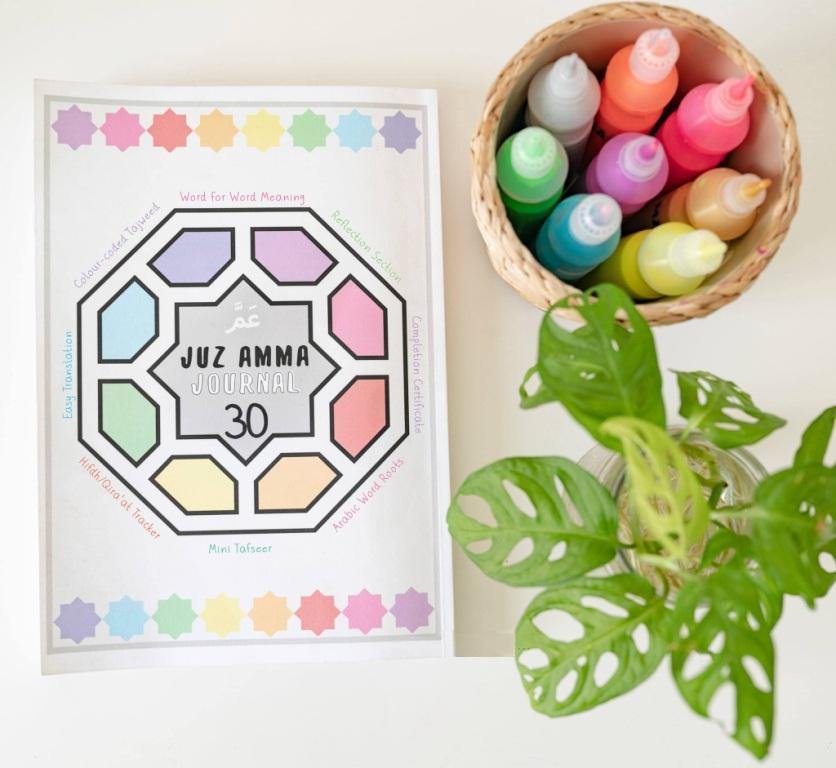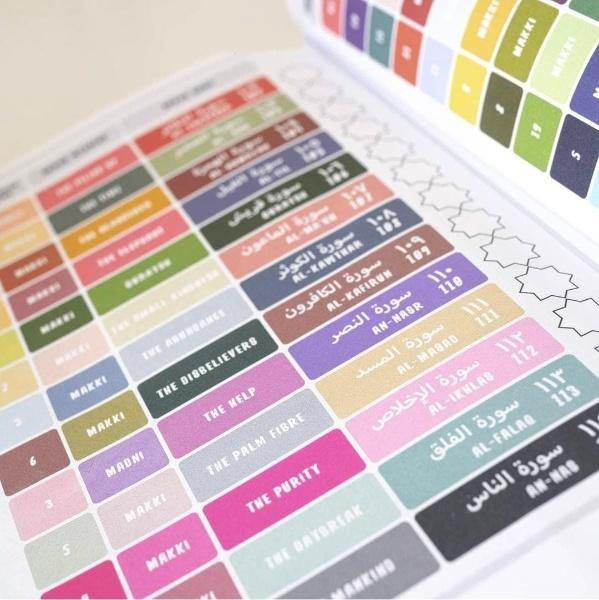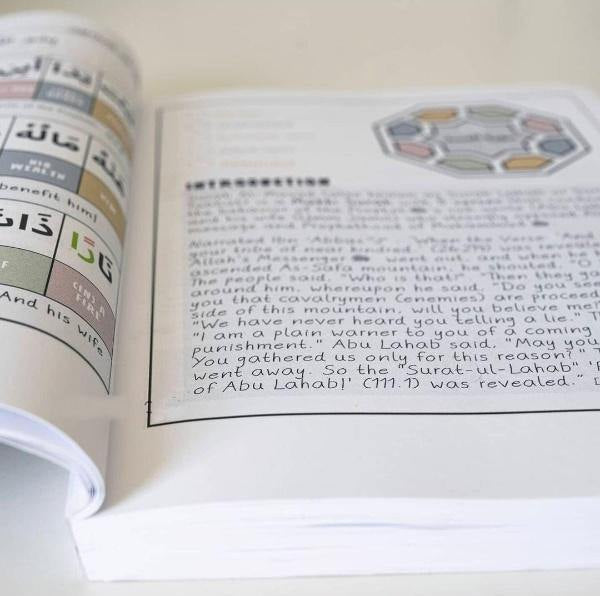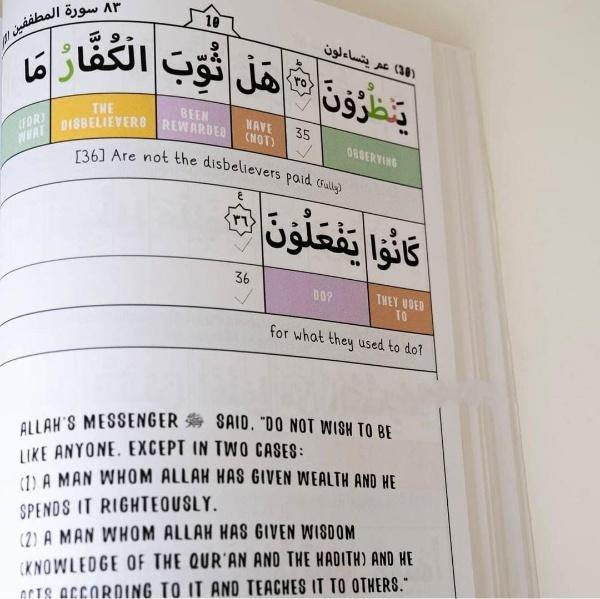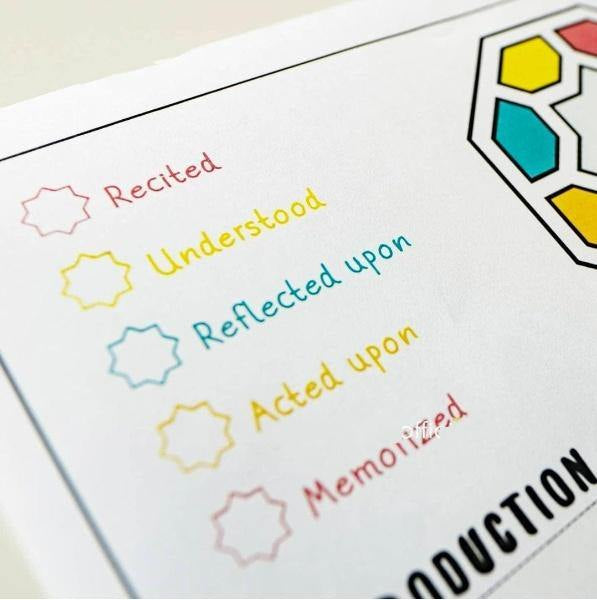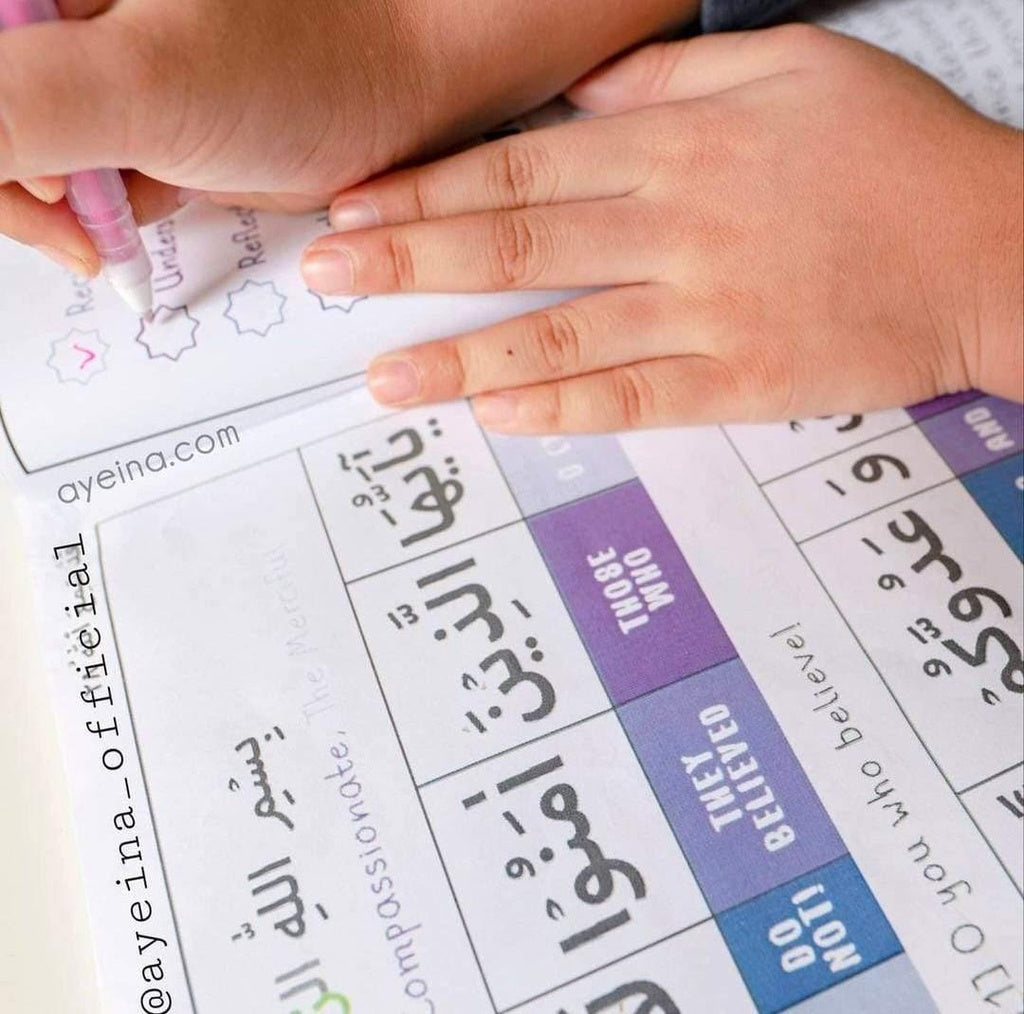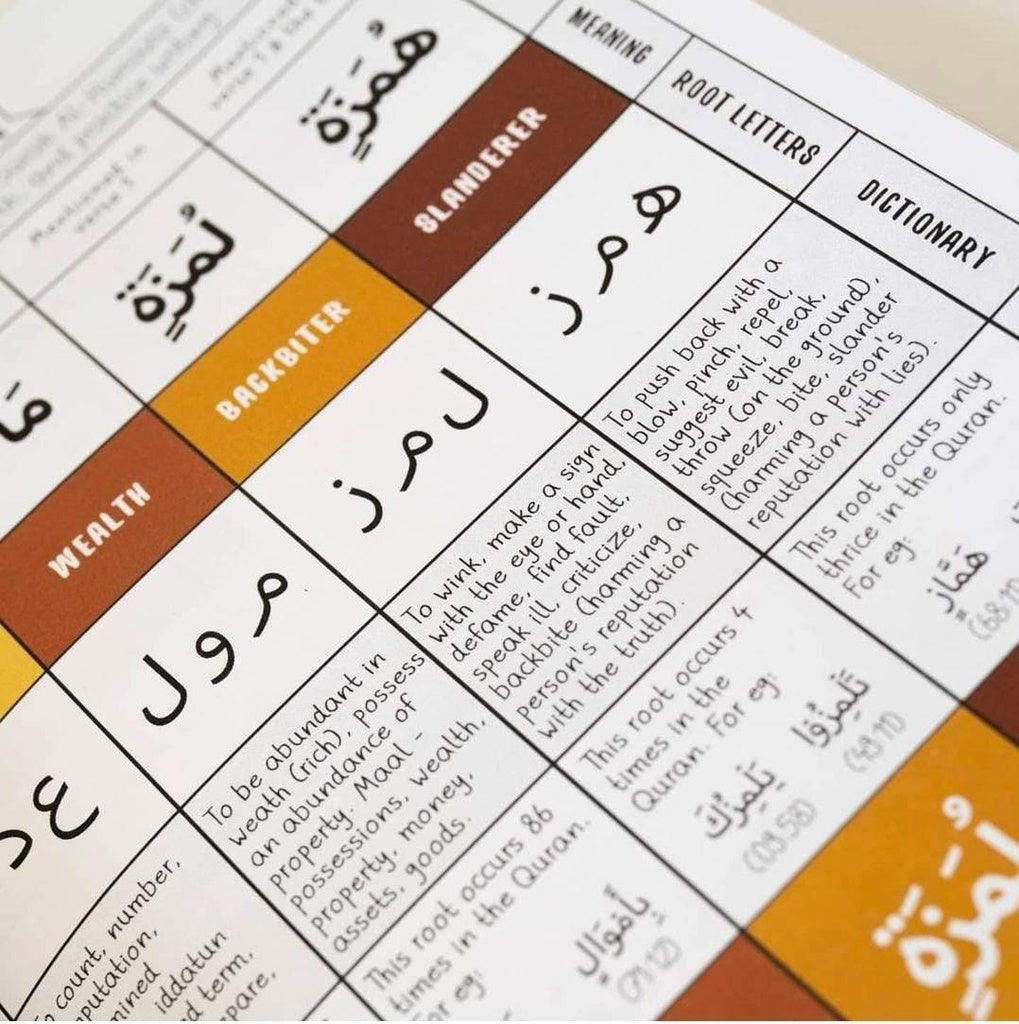The storyteller qa
Juz 30 (Juz Amma) - Juz Journal
Juz 30 (Juz Amma) - Juz Journal
Couldn't load pickup availability
<head><meta charset="UTF-8" /></head>
Features:
☆ BIG Arabic Text
So it’s easier for kids to read the text when they shift from Qaida to the Quran.
☆ Colour-coded tajweed
Tajweed is the set of rules governing the way in which the words of the Quran should be pronounced during its recitation. Tajweed not only brings beauty in the recitation but also helps us recite the Quran the way it was recited by Prophet Muhammad ﷺ. Here are some of the basic rules highlighted in this book.
☆ Colourful word for word meaning
The aim of the word-for-word meaning is to enable a non-Arab reader to understand the Qur’an as well as to improve his/her knowledge of Arabic, particularly the Qur’anic Arabic. It is important to remember that any translation into another language can never be completely accurate. Similarly, many words in the Arabic language can carry a number of meanings depending on their context. So for each word, only the most common or relevant meaning is given in this book. The 3 volume work of Muhammad Mohar Ali along with Arabic dictionaries (as mentioned in the exercise section) have been used as a reference for the word for word meanings, simplified by Sheikh Saalim Al Azhari so the kids can understand easily in shaa Allah. Studying the Arabic language in detail is still recommended for a better understanding of the Qur’an.
☆ Easy translation
A translation of the meanings of the Qur’an is not considered to be Qur’an. Rather it is like a tafseer (commentary) of the Qur’an which explains the meanings and assists in understanding. When one reads a translation of the Qur’an, they are reading the translator’s interpretation of the original Arabic. This does not aim to introduce any new translation of the text. English translation of Dr. Muhammad Muhsin Khan which was published by King Fahd Printing Complex in Madinah, Saudi Arabia in 1996 (and approved by the University of Madinah, KSA) along with Saheeh International translation (compiled by three women and published by dar Abul Qasim, Saudi Arabia) and Tafsir Ibn Kathir have been used as references for this book in an effort to minimise the number of books you may have to open to teach the child about Allah’s words before they are grown up to absorb more knowledge and study Qur’an in-depth in shaa Allah (See references). Some parts are simplified for kids by Sheikh Saalim Al Azhari. A child may still need the help of an adult, depending on their age. This will also help you learn with the child in shaa Allah.
☆ Mini Tafseer
Tafseer means explanation, interpretation, context or commentary of the Qur’an for a clear understanding of Allah’s words. There is a mini Tafseer of each Surah before its start to give the introduction of the Surah along with its place of revelation and number of Aayaat. If it is revealed before Hijrah (migration for the sake of Allah), it is tagged as Makki Surah and if it is revealed after Hijrah, it is tagged as Madani Surah. Interpretation of the Qur’an through ahadith is the best way to approach the tafseer because it leaves little room for doubt. This is why introductions are short and are mainly described with the help of sahih ahadith (all of them can be cross-checked from sunnah.com for ease). Each Surah introduction has still been rechecked by Sheikh Saalim Al Azhari, whose detailed biography can be read at the end of the book.
☆ Hifdh/Qiraa’at tracker (also tracks understanding milestones etc.)
The Qur’an tracker has 5 sections before each Surah to help you track the child’s recitation, understanding, reflection, memorisation and application of knowledge. You can track the complete Surah and also track it Aayah by Aayah. Each Arabic and English translation ends with a dotted tick mark which you can fill in and write a date on for tracking the child’s qiraa’at (recitation), tafseer (understanding), or hifdh (memorisation) journey.
☆ Exercise section
Only 4 words are chosen out of each Surah to expand Arabic vocabulary one by one. These are the following sub-sections on the exercise page:
Root letters: Arabic letters that provide the basic meaning of a word are called “roots”. They are joined with other letters to form different words which have related meanings. A root usually consists of 3 letters (sometimes 4), which convey a basic idea. Changing the order of root letters changes the meaning of the word too. For eg: = knowledge and = deed.
Dictionary: This will help you explain the depth of Arabic language to the child – how it is so precise yet so vast. For this section, the following Arabic to English dictionaries have been referred to:
The Hans Wehr Dictionary of Modern Written Arabic 4th edition, Arabic-English Lexicon by Edward William Lane, Dictionary and Glossary of the Quran by John Penrice, Vocabulary of the Holy Quran by Dr. Nadwi.
Elsewhere in the Quran: This highlights how many times the related word has come in the Qur’an and in what form. This means that whenever and wherever it will come in the Qur’an again, you will probably know its basic meaning if you memorise it once.
Writing practice: This may help the child familiarise with the Arabic language through writing.
☆ Reflection section / Quran Journaling
The Qur’an Journaling / Reflection Section has been given because the purpose of reading and memorising the Qur’an is to reflect upon it and apply it in our lives. If you’re using it with a young child, please make sure that you supervise them and help them understand how to respect the words of Allah. They may experiment with different materials and use
creative design on the given page to embed their learning, but they should avoid illustrating the Qur’an with animate beings or the world of unseen (Allah, Prophets, Angels, Satan, Hell, Heaven, etc.).
☆ Certificate / Motivational Ahadith
The certificate at the end of the Juz is to encourage a child to keep going forward in their journey towards the completion of Qur’an. You can either use it for memorisation or recitation milestone by writing the child’s name in the middle strip. You can also use the inspiring ahadith about Qur’an, spread across the whole Juz, to develop self-motivation among kids.
Share
